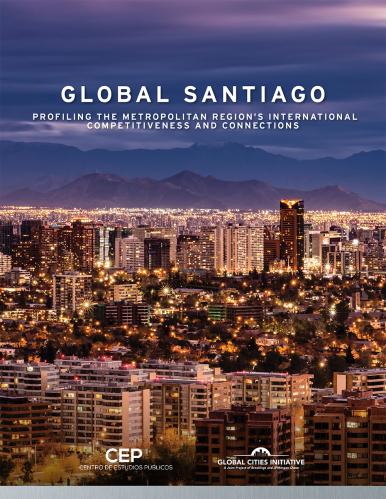The world’s largest metropolitan areas concentrate the drivers of global prosperity, but there isn’t one way to be a global city—this report defines seven types of global cities, providing a valuable lens through which to understand an evolving global economy.
As societies and economies around the world have urbanized, they have upended the classic notion of a global city. No longer is the global economy driven by a select few major financial centers like New York, London, and Tokyo. Today, members of a vast and complex network of cities participate in international flows of goods, services, people, capital, and ideas, and thus make distinctive contributions to global growth and opportunity. And as the global economy continues to suffer from what the IMF terms “too slow growth for too long,” efforts to understand and enhance cities’ contributions to growth and prosperity become even more important.
Seven types of global cities
In view of these trends and challenges, this report redefines global cities. It introduces a new typology that builds from a first-of-its-kind database of dozens of indicators, standardized across the world’s 123 largest metro economies, to examine what really defines a global city—its economic characteristics, industrial structure, and key competitiveness factors.
The typology reveals that there is no one way to be a global city. Grouped into seven metropolitan clusters, the distinct competitive positions of the world’s largest metro economies become sharper, as do the peers metropolitan areas can look to for common solutions and investments to enhance economic growth.
Data sources
Economic characteristics, including population, GDP, GDP per capita, GDP per worker, the traded sector productivity differential, and educational attainment, were calculated using data from Oxford Economics, Moody’s Analytics, and the U.S. Census Bureau. Industry data was not available for all Chinese metro areas. The source of the greenfield foreign direct investment data is the Financial Times’ fDi Markets database. The source of the university scientific impact data is the Centre for Science and Technology Studies (CWTS) at Leiden University. Patents data was obtained from the OECD’s REGPAT database. The source of the venture capital data is Pitchbook, a private financial research firm. The source of the aviation data is Sabre Aviation Solution’s global demand dataset (GDD). The source of the internet download speed data is Ookla’s “Net Index” (now rebranded as “Speedtest Intelligence”). All data was either provided at a standardized definition of metropolitan areas or was geocoded to a metropolitan area using Google Maps Geocoding API. For a detailed review of data and methods, please see the full report.







